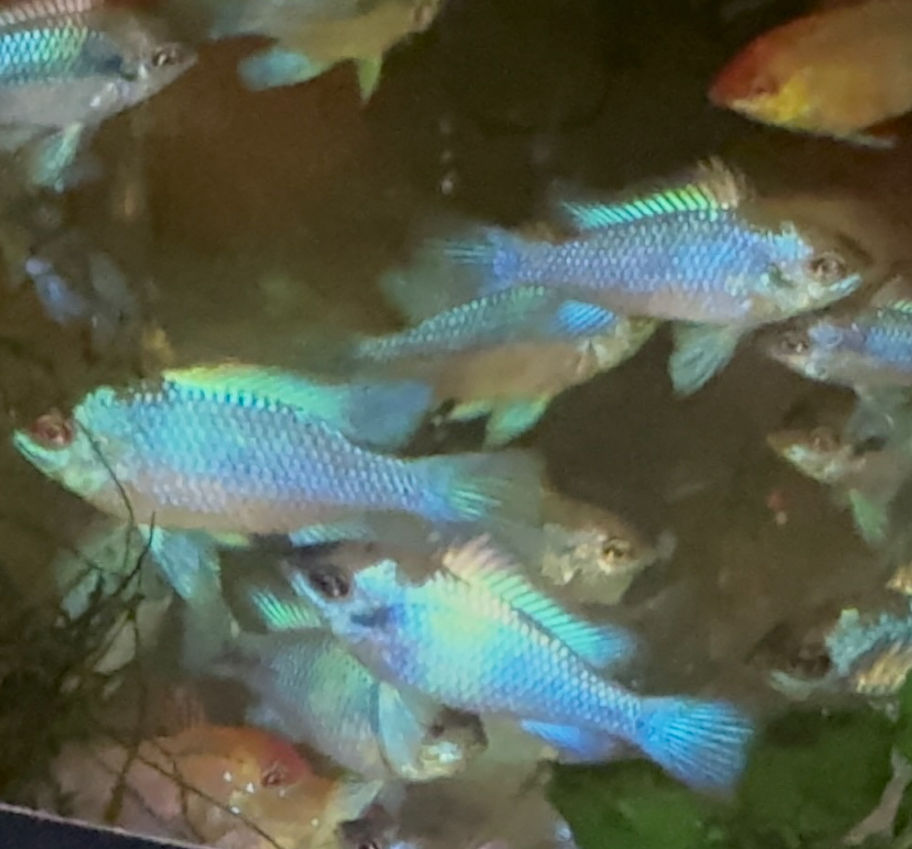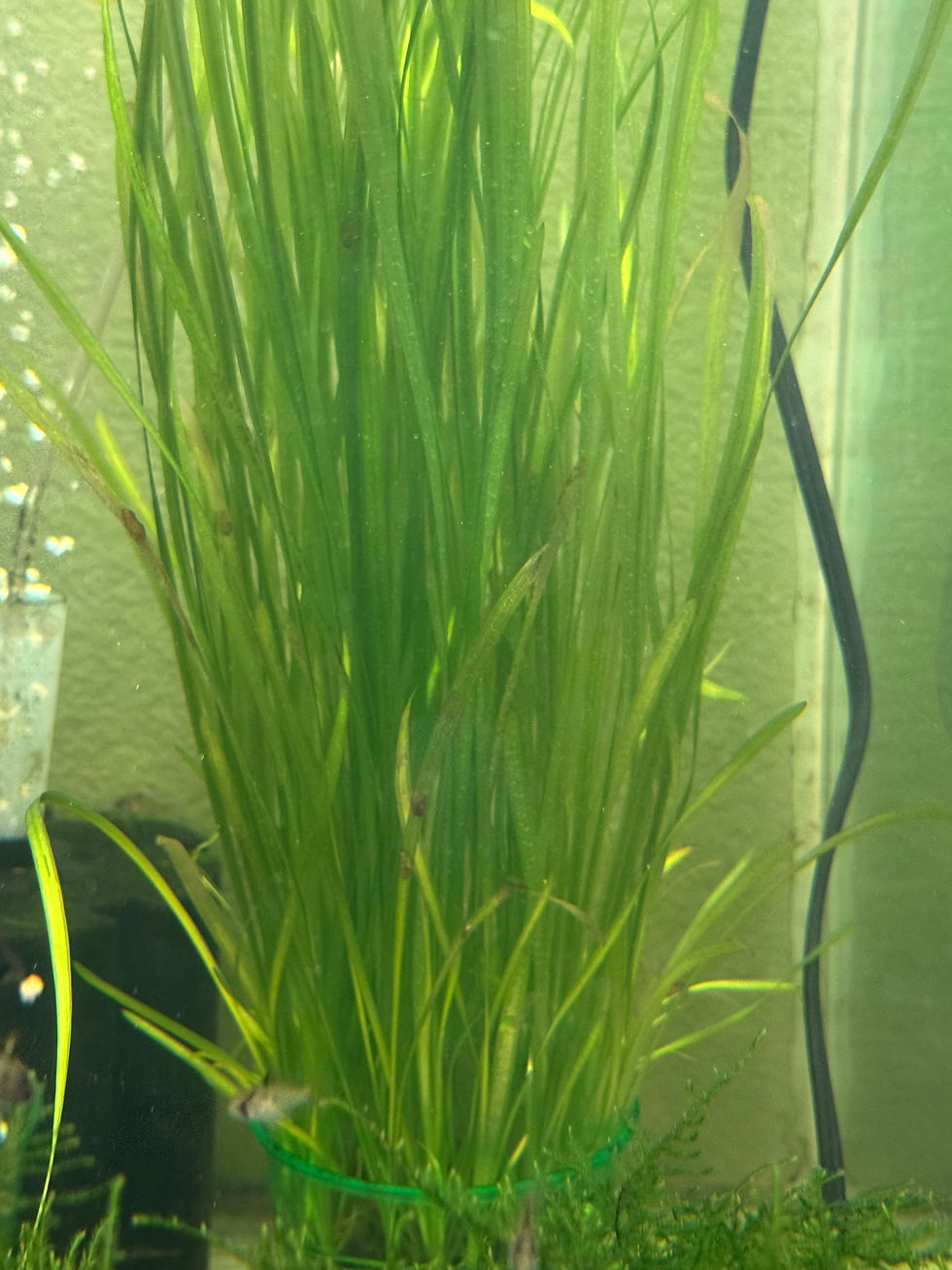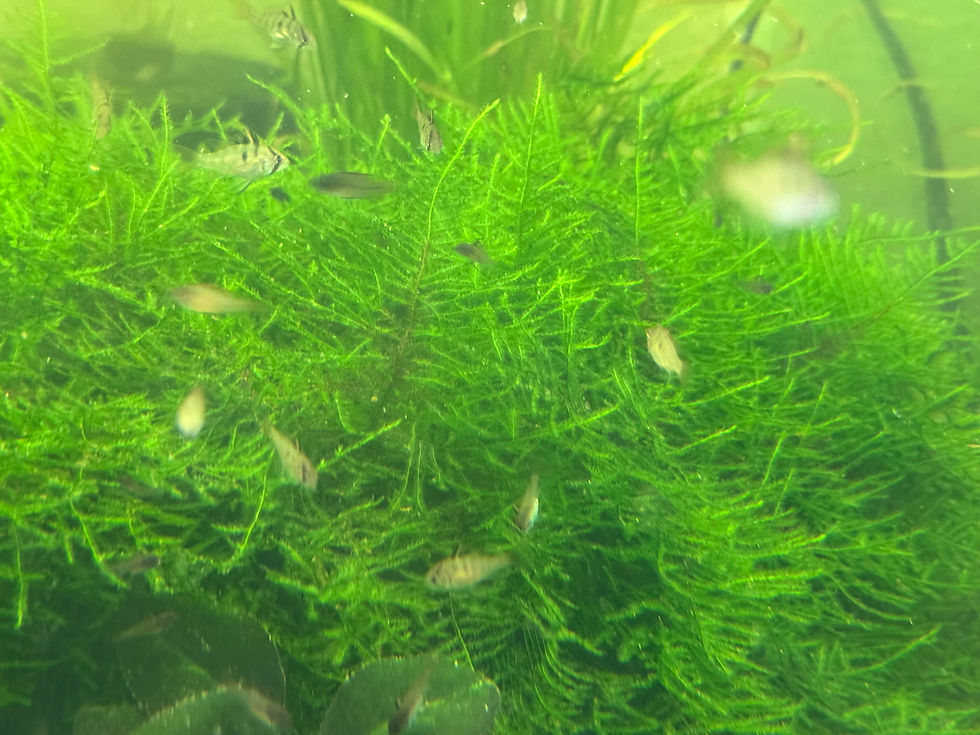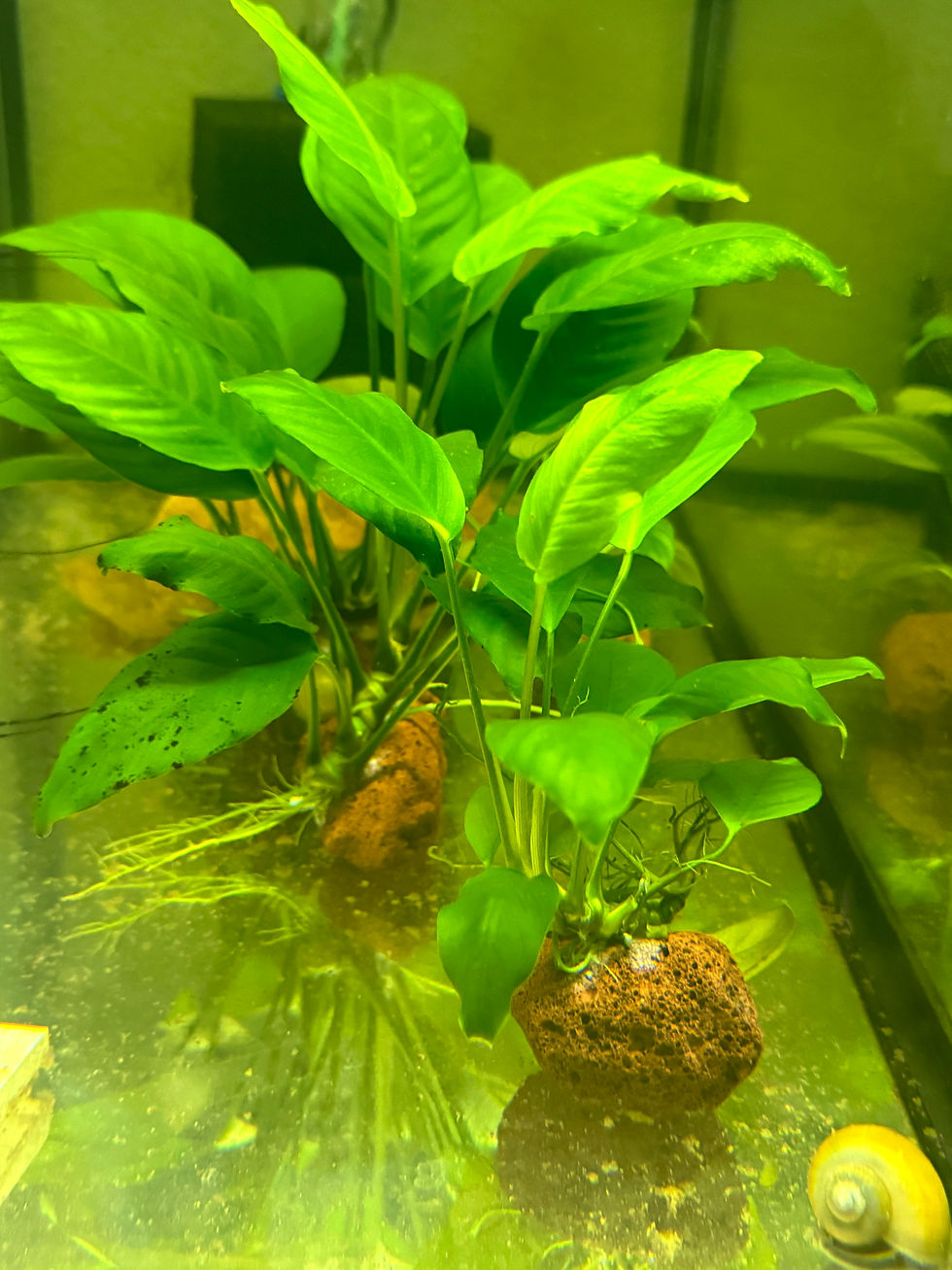top of page
Electric Blue Rams
Price
$15.00
The electric blue ram is also a color morph of Mikrogeophagus ramirezi (same species as the gold ram), but it’s been selectively bred for a brilliant, almost neon blue coloration across its whole body. Super eye-catching!
Here’s a quick profile:
- Size: Around 2–2.5 inches (5–6.5 cm), slightly smaller and more compact than wild-type rams.
- Temperament: Peaceful, though sometimes a little more territorial when breeding.
- Water parameters: Warm water (80–86°F / 27–30°C), soft and slightly acidic is best (pH around 6.0–7.0).
- Tank setup: They like lots of plants, smooth rocks, and driftwood to explore and hide.
- Diet: Omnivores — high-quality pellets, flakes, frozen foods (like daphnia, brine shrimp), and live treats.
- Lifespan: Usually 2–4 years with good care.
Important note: Electric blue rams tend to be a bit more delicate than regular German blue rams or gold rams, especially because heavy breeding for color sometimes results in weaker genetics. Keeping their water super clean and stable is really important.
Quantity
Care Guide
Tank Requirements
- Tank Size: Minimum 20 gallons for a pair
- Water Temperature: 78°F to 85°F (25.5°C to 29°C)
- pH Level: 6.0–7.5 (prefers slightly acidic)
- Water Hardness: Soft to moderately hard (3–12 dGH)
- Filtration: Strong biological filtration but with a gentle current
- Aquascaping: Sand or fine substrate, with plenty of hiding places (plants, caves, driftwood)
Water Quality
- German Blue Rams are very sensitive to poor water quality!
- Maintain:
- Ammonia and nitrites: 0 ppm
- Nitrates: Below 20 ppm
- Weekly 30–50% water changes are crucial.
Feeding
- Diet: Omnivorous — thrives on a varied, high-protein diet
- Good foods include:
- Daphnia, brine shrimp
- High-quality micro pellets for cichlids
- Occasional vegetable matter like spirulina flakes
- Feed 2–3 small meals a day.
Tankmates
- Best kept with peaceful community fish that enjoy warm, soft water:
- Cardinal tetras
- Rummy nose tetras
- Corydoras catfish (warm-tolerant varieties)
- Hatchetfish
- Plecos (small species like bristlenose)
- Avoid: Fin-nippers, aggressive fish, and large, boisterous tankmates.
Breeding
- Rams form monogamous pairs.
- They lay eggs on flat surfaces (like rocks or broad leaves).
- Both parents tend the eggs and fry.
- Breeding is best in separate tanks with slightly warmer water (around 82°F or 28°C) and very clean conditions.
Common Challenges
- Stress: A major cause of health problems; needs calm environments.
- Short lifespan: Even under the best care, 3–5 years is typical.
- Disease sensitivity: Prone to ich, parasites, and bacterial infections if water parameters fluctuate.
⸻
Bonus Tips for Happy German Blue Rams
- Provide lots of hiding spots — driftwood, caves, or dense plants.
- Keep their tank mates peaceful and calm — loud or nippy fish stress them out.
- Soft, warm water is key — if your tap water is hard, you might need RO (reverse osmosis) water.
- Watch their behavior — a healthy Ram will be curious, colorful, and actively exploring.
You may also like
bottom of page




















